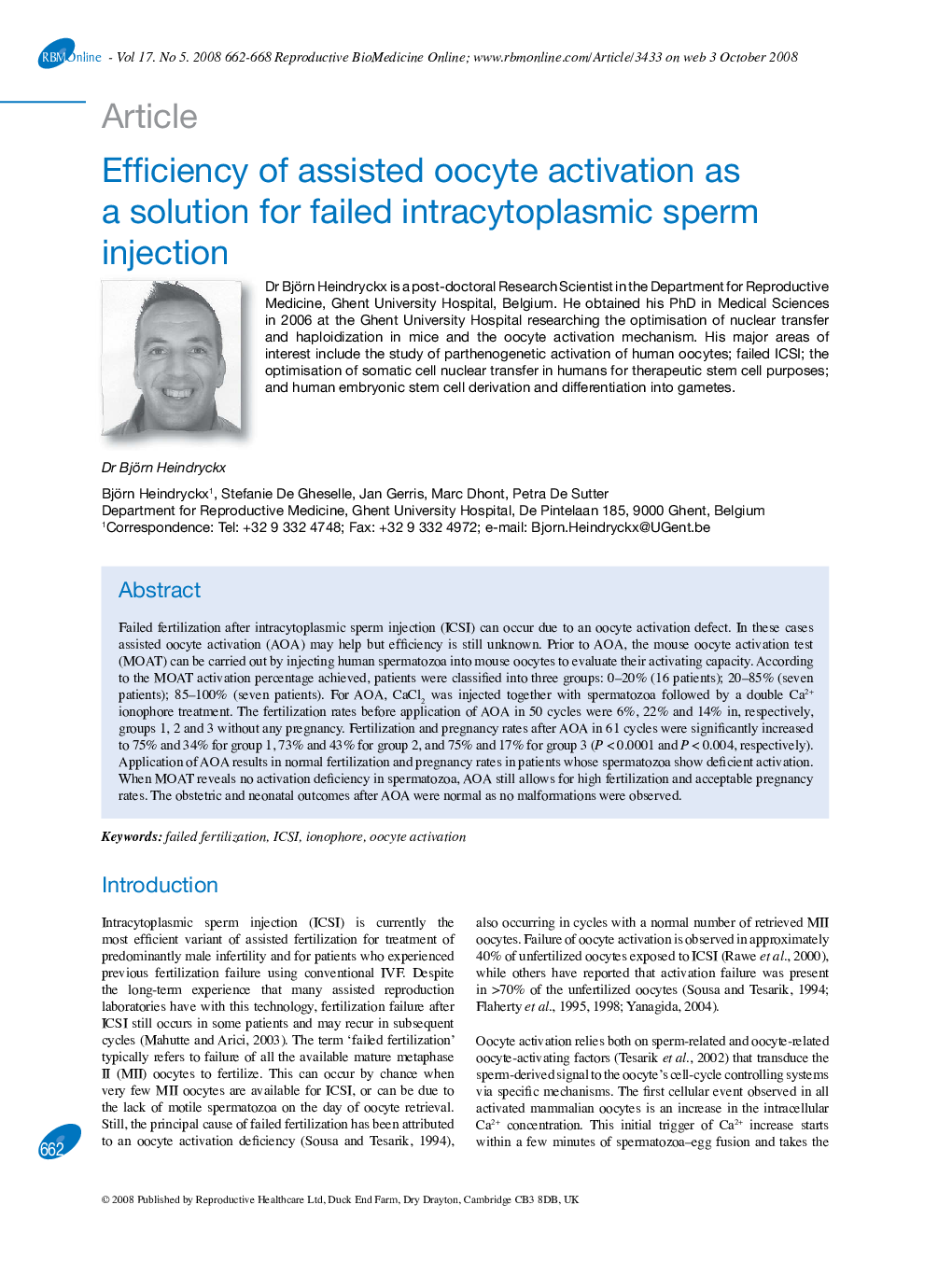| Article ID | Journal | Published Year | Pages | File Type |
|---|---|---|---|---|
| 3972352 | Reproductive BioMedicine Online | 2008 | 7 Pages |
Failed fertilization after intracytoplasmic sperm injection (ICSI) can occur due to an oocyte activation defect. In these cases assisted oocyte activation (AOA) may help but efficiency is still unknown. Prior to AOA, the mouse oocyte activation test (MOAT) can be carried out by injecting human spermatozoa into mouse oocytes to evaluate their activating capacity. According to the MOAT activation percentage achieved, patients were classified into three groups: 0–20% (16 patients); 20–85% (seven patients); 85–100% (seven patients). For AOA, CaCl2 was injected together with spermatozoa followed by a double Ca2+ ionophore treatment. The fertilization rates before application of AOA in 50 cycles were 6%, 22% and 14% in, respectively, groups 1, 2 and 3 without any pregnancy. Fertilization and pregnancy rates after AOA in 61 cycles were significantly increased to 75% and 34% for group 1, 73% and 43% for group 2, and 75% and 17% for group 3 (P < 0.0001 and P < 0.004, respectively). Application of AOA results in normal fertilization and pregnancy rates in patients whose spermatozoa show deficient activation. When MOAT reveals no activation deficiency in spermatozoa, AOA still allows for high fertilization and acceptable pregnancy rates. The obstetric and neonatal outcomes after AOA were normal as no malformations were observed.
